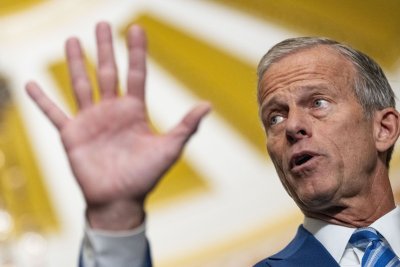Dodgers mull moving Andy Pages out of World Series Game 3 lineup
After taking his normal round of infield grounders during the Dodgers’ off-day workout Sunday, Kiké Hernández jogged to center field and spent a noticeable amount of time fielding fly balls there.
On the eve of Game 3 of the World Series, it might not have been a coincidence.
After using the same nine players in their starting lineup in six straight games since the start of the National League Championship Series, the Dodgers have been considering a change for Monday — one that could drop struggling second-year slugger Andy Pages to the bench.
While the Dodgers’ overall offense has been inconsistent this postseason, Pages has endured the most glaring slump. He has collected just four hits in 43 at-bats, registering a .093 average. He has 11 strikeouts, no walks, and only one extra-base knock, providing little pop or spark from the No. 9 spot.
Manager Dave Roberts acknowledged before Game 2 that he was mulling whether to keep Pages in the lineup. And though the 24-year-old outfielder, who had 27 home runs and 86 RBIs in the regular season, had a hit and run scored on Saturday, Roberts reiterated Sunday that making a move with Pages was “still on the table” and “front of mind.”
“Just trying to figure out where he’s at mentally, physically,” Roberts said. “The performance hasn’t been there. So thinking of other options, yeah.”
One reason the Dodgers have stuck with Pages is because of their limited defensive alternatives — including, first and foremost, utilityman Tommy Edman being restricted to only second base this October because of a lingering ankle injury.
Edman, who split time last postseason between center field and shortstop, did say this weekend that his ankle was feeling better (even though he didn’t close the door on potentially needing surgery this offseason). But Roberts noted that Edman “hasn’t taken a fly ball out there in a month,” casting continued doubt over his ability to play anywhere else.
Without Edman, Hernández is the only other true center-field option for the Dodgers to use in their starting lineup, having also played there during the team’s World Series run last year. This postseason, Hernández has been a fixture in left (while also mixing in at third base). But if he were to slide to center field for Game 3, it could open left field for someone like Alex Call.

Call, a trade deadline acquisition who was a part-time player down the stretch in the regular season, does not represent as much of a power threat as Pages, but is a better contact hitter with more on-base ability.
Of course, the Dodgers’ offensive inconsistencies have gone beyond Pages.
They have not topped five runs in a game since the wild-card round. They have hit just .216 as a team since the start of the division series. Shohei Ohtani and Freddie Freeman are still batting under .225 in the playoffs. Mookie Betts is batting .136 since the start of the NLCS.
During their Game 2 win, Roberts felt the club missed a lot of hittable pitches against Blue Jays starter Kevin Gausman, before Will Smith and Max Muncy finally broke through with home runs in the seventh.
That, Roberts felt, was a sign his lineup was “a little bit in between” in its approach, squandering opportunities to do damage against fastballs over the plate while also trying to protect against breaking stuff out of the zone.
“They have made good pitches, but we have missed pitches as well,” Roberts said. “I do think that coming home, I feel that we’re back into a little bit of a rhythm offensively.”
Perhaps shaking up the lineup will help, as well.


